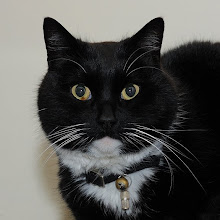The events leading to the formation of The Holland Regiment on 31 May 1665 is often surrounded with incomplete or incorrect detail.
In 1664 there were four English and three Scots regiments in service of the Dutch States - General. These regiments are the descendants of the English and Scots companies that came to the aid of the Dutch in their fight against Spain in 1572 (the Eighty Years' War). Initially companies were hired as independent units, which were occasionally grouped into formations which were called regiments. These regiments constituted more a grouping of companies than a real regiment with regimental officers. However, before the end of the 16th century the first long-standing English and Scots regiments are a fact. The number of regiments increased gradually, so eventually we find reference to the English and Scots Brigades.
As said, in 1664 there were four English and three Scots regiments in Dutch service. However, tension was growing between the Dutch Republic and England and on 4 March 1665 [NS] England declared war on the Dutch Republic. The next day the States - General decided to disband the seven regiments, which had 53 companies between them of which 32 English and 21 Scots. From these disbanded companies, four Dutch national regiments were to be formed with 42 companies. Officers thus discharged were enabled to take an oath of allegiance to the Republic and become Dutch officers, or could choose to leave for England. The four new regiments were formed by commissions dated 20 March 1665.
Most of the English officers refused to take the oath, and opted to return to England. In Knight (1905) (reference see below) a list of officers taking or refusing the oath is given. Though not complete, it is an interesting list. Of the colonels and lieutenant-colonels, three out of four refused to take the oath, but for the majors, captains, lieutenant and ensigns the ratio seems to be more fifty-fifty. The general impression from most literature that the English refused to take the oath en masse should be nuanced a little.
Of the three Scots regiments, only a small handful refused to take the oath. Amongst them no colonels or lieutenant-colonels.
Upon return in England it took a while before Charles II decided to put the experienced officers to good use. And finally on 31 May 1665 he issued a commission to Robert Sidney to be colonel of The Holland Regiment consisting of six companies. Except for one officer, all officers in the new regiment had previously been in Dutch service.
The reorganisation of the seven regiments into four Dutch regiments can be summed up as follows:
1. the three Scots regiments were converted into three Dutch regiments, under the same colonels.
2. the four English regiments were replaced by one single Dutch regiment under Thomas Dolman.
The regiments in 1664:
The four English regiments:
* Lord Craven's Regiment. William, Lord Craven was the future 1st Earl of Craven who commanded the Coldstream Regiment of Guards from 1670 until 1689. He refused to take the oath.
* Thomas Dolman's Regiment. Dolman took the oath and commanded a new Dutch regiment from 1665 until 1672. In 1676 he became colonel of the 2nd English Regiment in Dutch service
* Sir William Killigrew's Regiment. Refused to take the oath. Was appointed colonel of the Lord High Admiral's Regiment on 5 November 1664.
* Robert Sidney's Regiment. Refused, and became the first colonel of the Holland Regiment.
The three Scots regiments:
* Walter Scott's Regiment
* Johan Kirkpatrick's Regiment
* Louis Erskine's Regiment
Recommended literature: Captain H.R.KNIGHT, Historical Records of The Buffs, East Kent Regiment, 3rd Foot, formerly designated The Holland Regiment and Prince of Denmark's Regiment. Volume 1 1572-1704. Gale & Polden, London, 1905. Available online via www.archive.org.
Subscribe to:
Post Comments (Atom)




4 comments:
Ik was de naam Holland Regiment al eens eerder tegengekomen, is dit nu een engelse benaming?
Het regiment dat gevormd werd uit gerepatrieerde officieren en soldaten van Engelse regimenten in Staatse dienst werd inderdaad "The Holland Regiment" genoemd. Zo staat het in betaaloverzichten en andere documenten uit de 17e eeuw. In 1689 lijkt de naam in onbruik te zijn geraakt, er waren toen immers meerdere 'Hollandse' regimenten in Engelse dienst. Vanaf toen heette het regiment officieel 'Prince George, Hereditary Prince of Denmark's Regiment', maar veelal werd gewoon de naam van de colonel gebruikt.
Aha, ik kreeg soms uit Engelse boeken het idee dat ze ook in Nederland zo bekend stonden.
Mooie blog overigens!
Bedankt voor het compliment! Jouw blog ziet er ook erg fraai uit. Veel leuke en mooie prenten, schilderijen en dergelijke.
Hoe het regiment in Nederland bekend stond, na 1665 dus, weet ik niet. Voor 1665 waren er dus vier regimenten, gewoon bij de naam van de colonel bekend.
Post a Comment